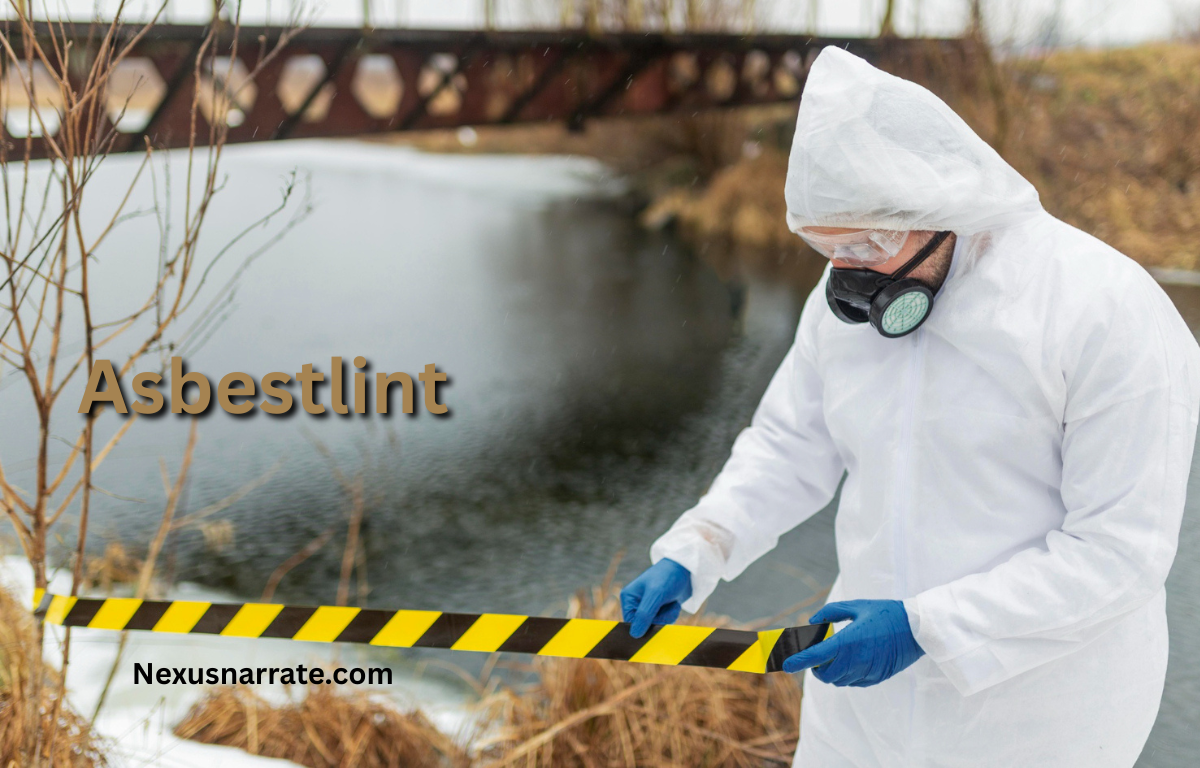Are you aware of the hidden danger lurking in older buildings? Asbestlint, or asbestos tape, has been a common material used for insulation and fireproofing. Its prevalence means that many homeowners might unknowingly come into contact with it during renovations or repairs. Understanding how to safely handle and remove asbestlint is crucial for your health and safety. In this guide, we’ll break down everything you need to know about asbestlint—from its risks to effective removal strategies—ensuring you’re well-equipped to tackle any situation involving this hazardous material. Let’s dive in!
Asbestlint 101: What You Need to Know for Safe Removal
Asbestlint, commonly found in older construction, is a type of material that contains asbestos. This fibrous mineral was widely used due to its fire-resistant properties and durability. However, it poses significant health risks if disturbed or damaged.
When removing asbestlint, it’s essential to take precautions seriously. Proper training and equipment are necessary to minimize exposure to harmful fibers. Always consider hiring professionals who specialize in asbestos removal for safe handling practices and compliance with regulations. Your safety should be the top priority during any renovation project involving this hazardous material.
Also Read: https://nexusnarrate.com/kotora-melnkalne/
Understanding Asbestlint
Asbestlint, commonly known as asbestos tape, is a material that was widely used for its insulation properties. It often contains chrysotile or other fibers and can be found in older buildings. This product served various purposes, including sealing ductwork and insulating pipes.
Understanding the composition of asbestlint is crucial for safety. When disturbed, it releases harmful fibers into the air. These tiny particles can pose serious health risks when inhaled. Knowing where this material may exist in your environment is vital to ensuring safe handling practices during any renovation or repair work.
Health Risks and Dangers
Asbestlint poses serious health risks due to its fibers, which can become airborne and easily inhaled. Exposure can lead to severe respiratory issues, including asbestosis and lung cancer. Even brief contact with these materials can have long-term consequences.
The dangers extend beyond immediate symptoms. Prolonged exposure increases the risk of mesothelioma, a rare but aggressive cancer linked directly to asbestos fibers. Understanding these risks is crucial for anyone involved in renovation or demolition projects where asbestlint may be present. Prioritizing safety measures is essential for protecting both individuals and communities from potential harm.
Detection and Identification
Detecting asbestlint can be challenging. It’s often hidden in building materials like insulation, flooring, and roofing. Homeowners may not realize they have it unless a renovation or repair exposes it.
To identify asbestlint safely, professional testing is crucial. Samples should be collected by trained experts to avoid contamination. These specialists utilize certified labs to determine the presence of asbestos fibers accurately. Regular inspections in older buildings are also recommended for proactive safety measures against potential risks associated with this hazardous material.
Safe Handling and Removal Processes
Handling asbestlint requires caution and proper techniques. Always wear protective gear, including respirators and gloves, to minimize exposure. Seal off the work area with plastic sheeting to prevent fibers from spreading.
When removing asbestlint, moisten it first to reduce dust. Carefully cut away the material without breaking it apart. Place any removed pieces in airtight containers for safe transport. Dispose of them at a licensed waste facility that specializes in hazardous materials, ensuring compliance with local regulations throughout the process.
Legal and Regulatory Considerations
When dealing with asbestlint, it’s crucial to understand the legal framework that governs its removal. Various regulations exist at local, state, and federal levels to ensure safety during any abatement process. Familiarizing yourself with these laws can help you avoid fines and potential legal repercussions.
Additionally, hiring licensed professionals is often mandated for safe handling. They are trained in compliance with regulations like OSHA and EPA standards. Following these guidelines not only protects workers but also minimizes risks to public health and the environment during removal activities.
Modern Alternatives and Solutions
As awareness of asbestlint hazards grows, modern alternatives are emerging. Innovative materials offer the same insulation and fire resistance without the health risks associated with asbestos. Products made from mineral fibers or cellulose are gaining popularity in construction.
Additionally, advancements in technology support safer removal practices. Tools like HEPA vacuums and containment systems minimize exposure during abatement projects. These solutions not only protect workers but also ensure a cleaner environment for future generations to enjoy. Embracing these options can lead to healthier living spaces while addressing safety concerns effectively.
Environmental Impact and Disposal
The environmental impact of asbestlint is significant. When disturbed, this hazardous material can release fibers into the air, posing risks to not only human health but also ecosystems. Proper disposal methods are crucial to mitigate these dangers.
Disposal regulations vary by region, and adhering to them is essential for protecting the environment. Asbestlint must be sealed in appropriate containers and taken to designated facilities that specialize in hazardous waste management. Ignoring proper protocols can lead to contamination of soil and water sources, making responsible handling imperative for community safety.
Future Outlook and Research
Research into asbestlint continues to evolve, reflecting the growing awareness of its dangers. New methods for detection and analysis are being developed, improving safety measures for both professionals and homeowners. Scientists are also exploring alternatives that can provide similar benefits without the health risks associated with asbestlint.
As regulations evolve, there is a push towards more stringent laws around usage and removal processes. Increased public awareness plays a crucial role in driving this change. Asbestos research remains vital in understanding long-term impacts on health and environment.
The future looks promising with advancements in technology aimed at safer handling practices. Continuous education on safe removal techniques will empower individuals to make informed decisions regarding their spaces. This ongoing commitment to safety ensures we can manage the legacy of asbestlint responsibly while protecting our communities.





